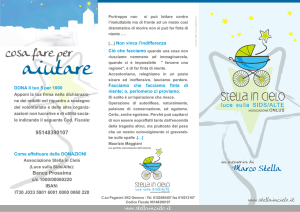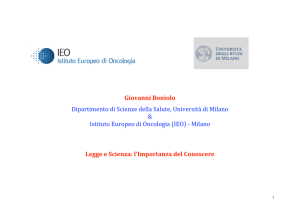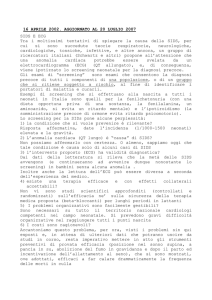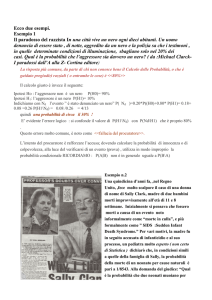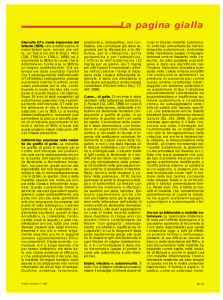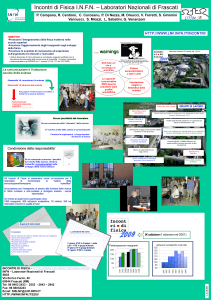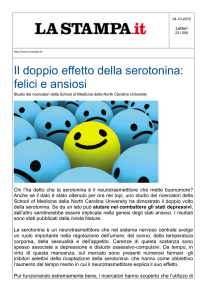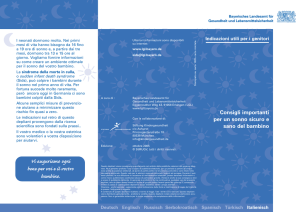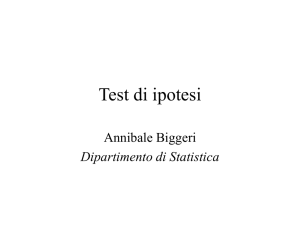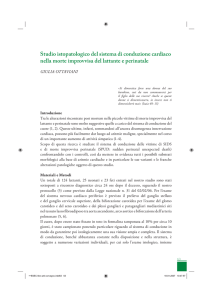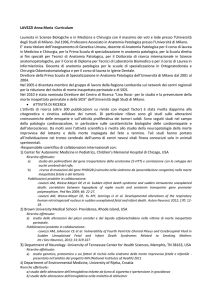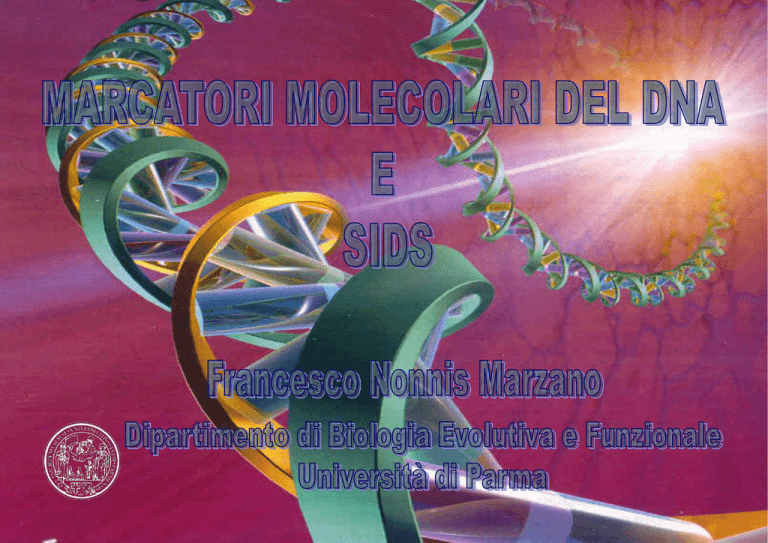
Fattori di rischio ambientale
IN AMBITO FAMILIARE
1 morte inattesa=tragedia
2 morti inattese=sospette
3 morti inattese=omicidio
2 generazioni precedenti:
5 SIDS
Lenoir Calenda et al. (2000). Medical Hypotheses 54: 408-411
EREDITA’ AUTOSOMICA DOMINANTE A PENETRANZA INCOMPLETA
Auckland, Nuova Zelanda (2000)
1 lavoro
Firenze, Italia (2002)
4 lavori
Edmonton, Canada (2004)
4 lavori
Yokohama, Giappone
(2006)
12 lavori
STORICAMENTE
CITOGENETICA
Machin (1974). Chromosome and perinatal death. Lancet
GENETICA MOLECOLARE
Ding et al. (1991). G985 mutation in MCAD. New Eng. J. Med.
Schwartz et al. (2000). SCN5A and LQTS. New Engl. J. Med.
Narita et al. (2001). Serotonin gene and SIDS. Pediatrics
Opdal et al. (2003). IL-10 and SIDS. Hum. Immunol.
Weese Mayer et al. (2004). ENS and SIDS. Ped. Research.
SIDS: Does a gene exist?
GENETICA e SIDS
Opdal e Rognum (2004); Hunt (2005)
MCAD
1. MUTAZIONI
KVLQT
HERG
Canali del potassio
MALATTIE
GENETICHE
SCN5A
KCNE1
KCNE2
Canali del sodio
MORTE
C4A
2. POLIMORFISMI
C4B
HLA-DR2
PREDISPOSIZIONE
IL-10
INTERAZIONE
5-HTTLPR
CON
AMBIENTE
hsp
mtDNA
Copyright ©2004 American Academy of Pediatrics
ESTRAZIONE E PURIFICAZIONE DNA
15 casi SIDS
22 controlli
10 prelievi autoptici in etanolo
5 inclusi in paraffina
sangue intero
ANALISI GENETICHE
AMPLIFICAZIONE PCR
PCR E SEQUENZIAMENTO
MAO-A
Serotonina
MCAD
Metabolismo lipidi
5-HTT
Serotonina
SCN5A
QT lungo
GSTT
Detossificazione
Serotonina
GSTM
Detossificazione
TPH-2
Copyright ©2004 American Academy of Pediatrics
MCAD – AcilCoA Deidrogenasi a Catena Media
AAA = Sano
GAA = Deficit MCAD
AAA
GTG
GTA
MCAD – AcilCoA Deidrogenasi a Catena Media
Mutazione puntiforme A985G
FREQUENZA OMOZIGOTI
Australia 1/20.000 nati vivi
USA 1/28.000
Nord Europa 1/10.000 – 50.000
Italia 1/442.000 nati vivi
SCN5A (LQT3) – Canale del sodio voltaggio dipendente
Ali et al. (2000). American Journal of Cardiology 85: 457-461
Sonno
Gene 80.000 pb
28 Esoni
Proteina di 2016 AA
SCN5A – Mutazioni puntiformi Esone 16
Nessuna mutazione
SEROTONINA (5 Idrossitriptamina)
Neuroni serotoninergici esercitano effetto modulatorio su:
FUNZIONALITA’ CARDIOVASCOLARE
TONO MUSCOLARE
RITMO RESPIRATORIO
TERMOREGOLAZIONE
RITMI CIRCADIANI
REGOLAZIONE SONNO
STATI COMPORTAMENTALI
TPH-2 TRIPTOFANO IDROSSILASI
Mutazione G1463A perdita 80% della funzionalità enzimatica
5-HTT (SERT) – Trasportatore della serotonina
Polimorfismi della regione del promotore
Allele S (Short)
Allele L (Long)
Allele XL (extra long) Asiatici
5-HTT (SERT) – Trasportatore della serotonina
5-HTT (SERT) – Genotipi
Omozigoti
S/S
Omozigoti
L/L
Eterozigoti
L/S
SERT (5-HTT) – Trasportatore della serotonina
SIDS 1
Short/Long
eterozigote
SIDS 2
SIDS 3
Long/Long
omozigote
SIDS 4
Controllo 1 Controllo 2 Controllo 3
Short/Long
eterozigote
Tutti eterozigoti
5-HTT : TRASPORTATORE DELLA SEROTONINA
SIDS
n=15
Genotipo L/L
Genotipo S/L
Genotipo S/S
Controlli
n=22
58%
42%
0%
14%
59%
27%
5-HTT FREQUENZE ALLELICHE
SIDS
79% (n=15)
Frequenza
allele L
Controlli
43% (n=22)
28% (n=27)
14% (n=115)
Narita et al. (2001)
73% (n=87)
35% (n=100)
Weese Mayer et al. (2003)
DATI
BIBLIOGRAFICI
TRASPORTATORE DELLA SEROTONINA
DISTURBI DEPRESSIVI MAGGIORI
Genotipo S/S
INSONNIA
GENOTIPO 5 HTT = Short/Short
Short sleeping e frequenti risvegli
SIDS Genotipo L/L
IPERSONNIA
DEFICIT DI AROUSAL
7 SIDS GENOTIPO L/L
6 IPOPLASIA NUCLEO ARCUATO
MODELLO DEL TRIPLO RISCHIO
Kinney e Filiano
Critical period
of development
Pre/Postnatal
vulnerability
SIDS
5-HTT
MAO-A
Exogenous postnatal
stressor
MAO-A Monoaminoossidasi A
PROMOTORE
5’
3’
PROMOTORE
5’
3’
5’
3’
5’
3’
PROMOTORE
PROMOTORE
REGIONE CODIFICANTE
REGIONE CODIFICANTE
REGIONE CODIFICANTE
REGIONE CODIFICANTE
3’
5’
3’
5’
3’
5’
3’
5’
MAO-A
L/L
In collaborazione con
Istituto di Anatomia Patologica
Università di Milano
Dipartimento di Scienze GinecologicheOstetriche e di Neonatologia
Università di Parma
[email protected]
AMPLIFIED FRAGMENT LENGTH POLYMORPHISM
NO
SI
Controlli
SIDS
AFLP
Fingerprinting
Marcatore associato a
fenotipo SIDS ?
Cc Cc Ma Ma Cu Cu Fe
Cc Cc Ma Ma Cu Cu Fe
Cc Ma Cu Fe
SIDS 2
422 marcatori AFLP analizzati
2 marcatori polimorfici
2 Midollo allungato
SIDS 1
446 marcatori AFLP analizzati
16 marcatori polimorfici
9 Corteccia cerebrale
9 Midollo allungato

